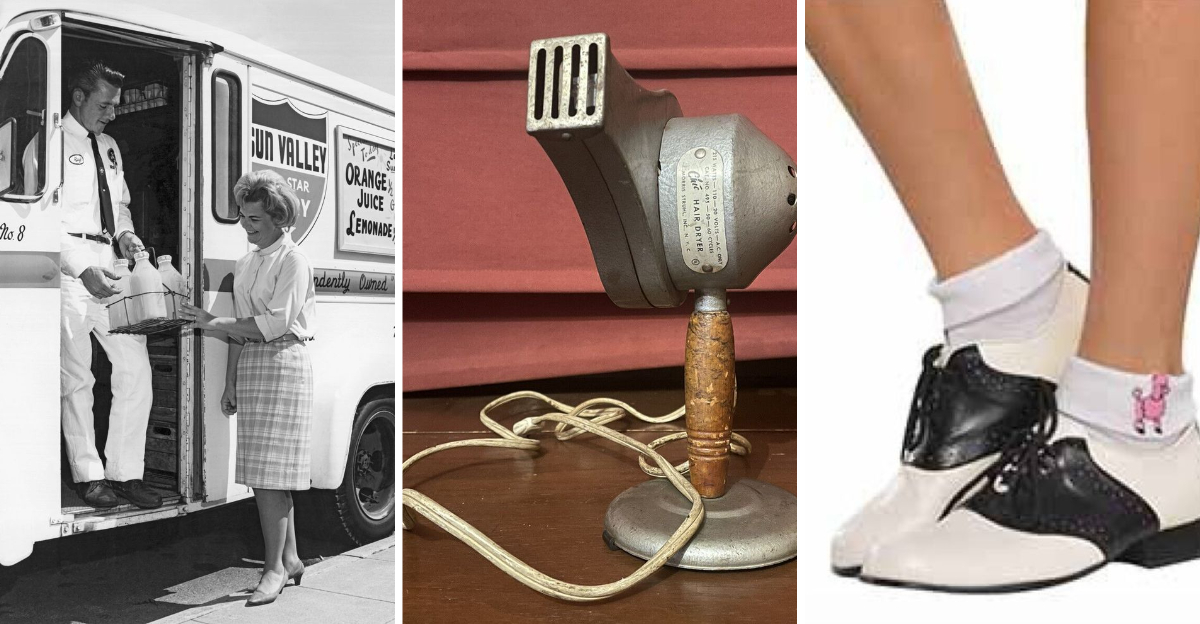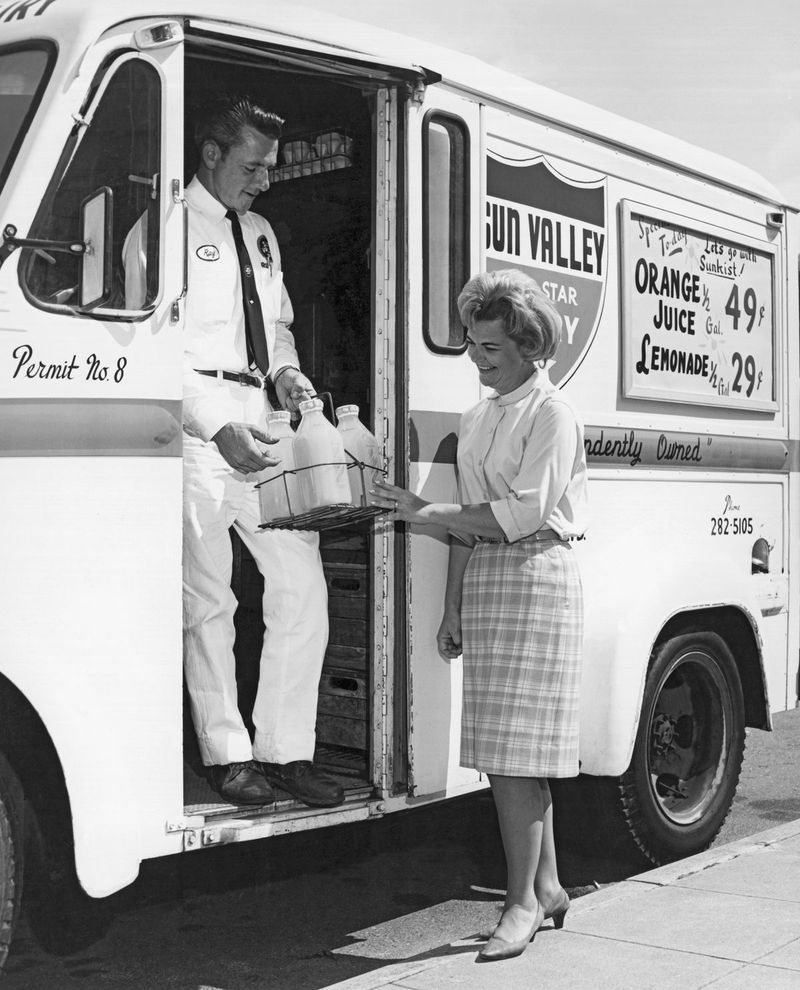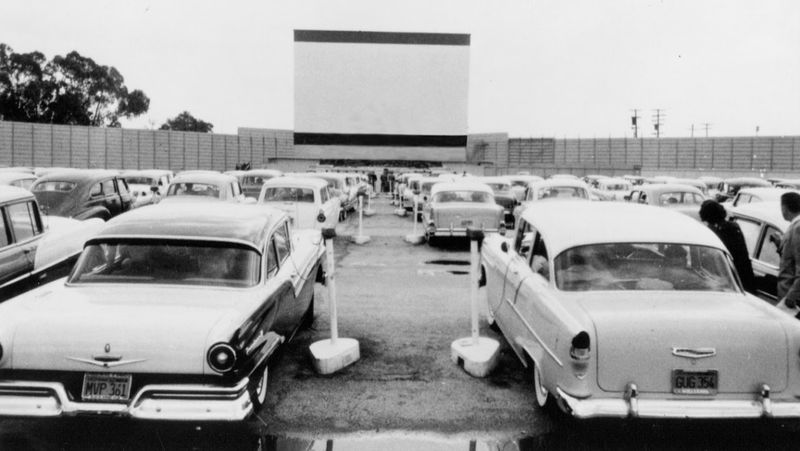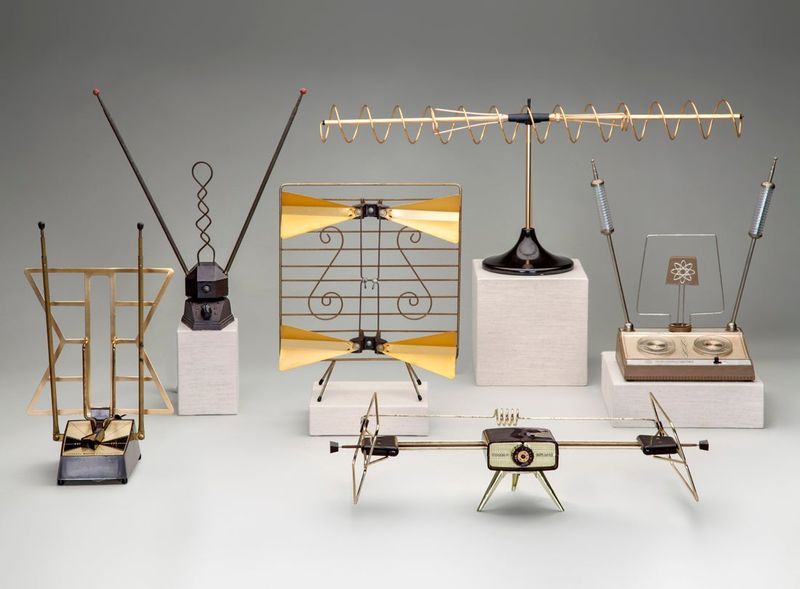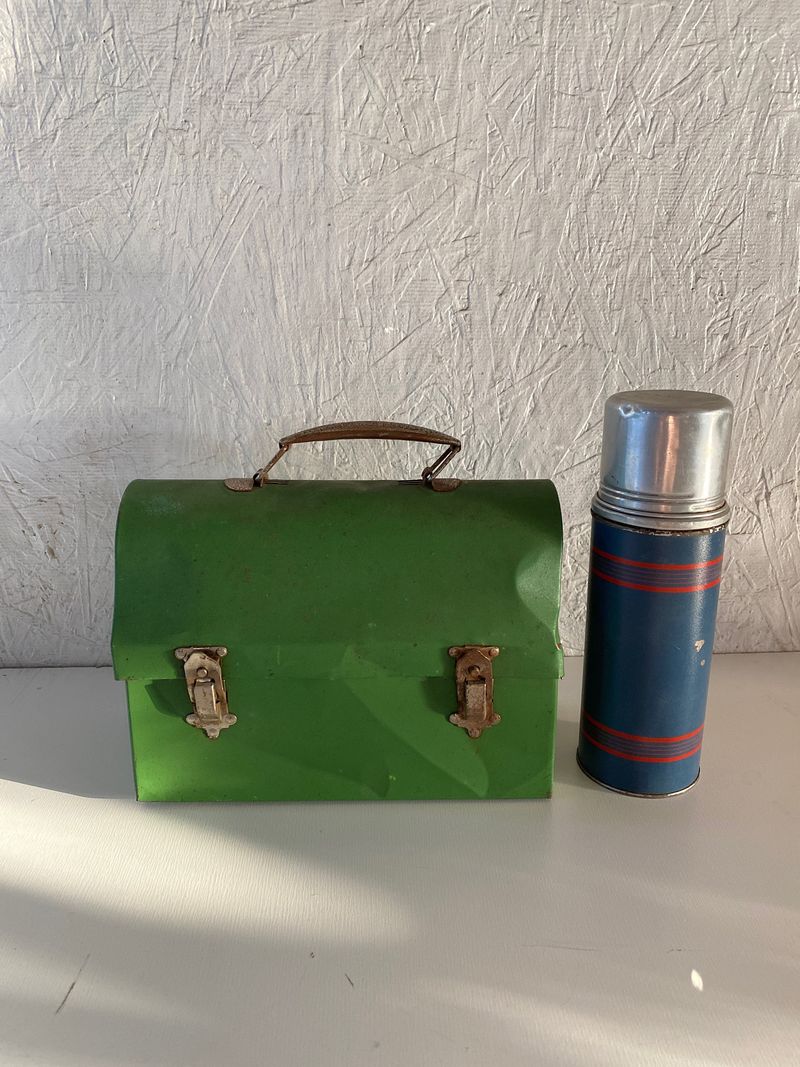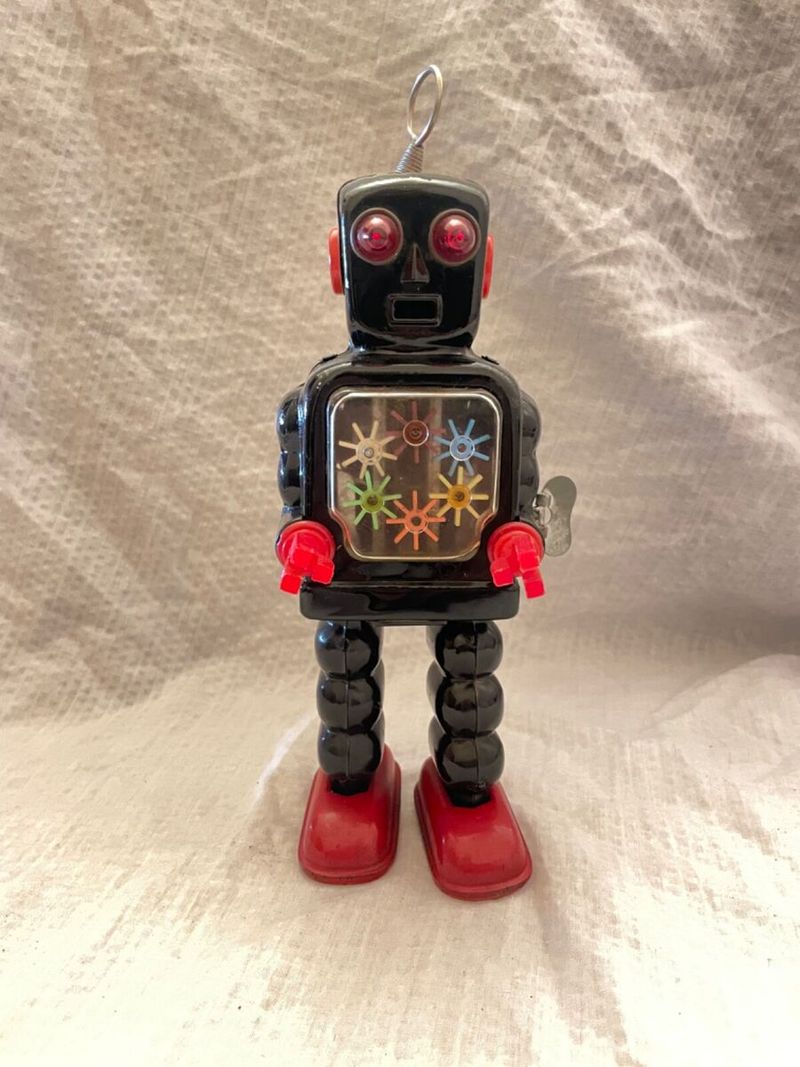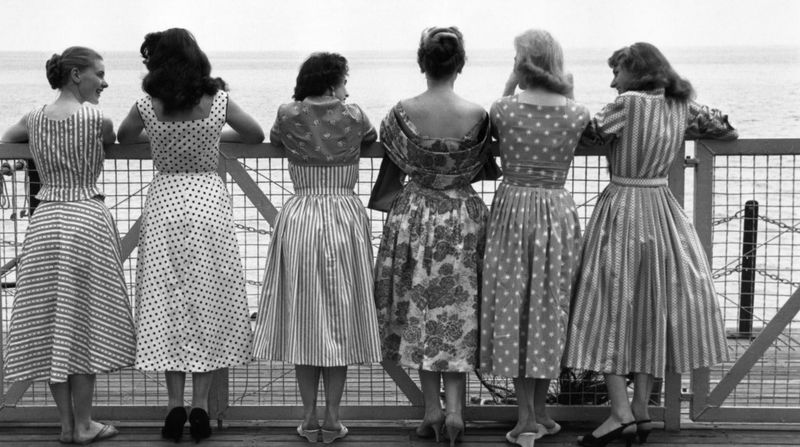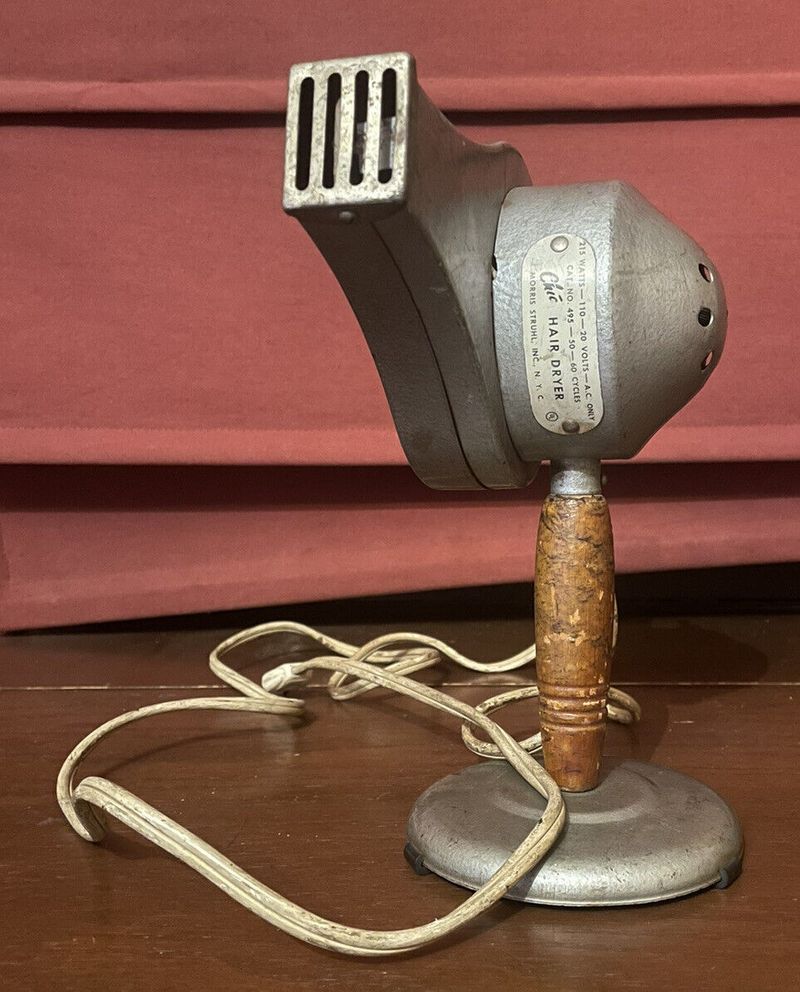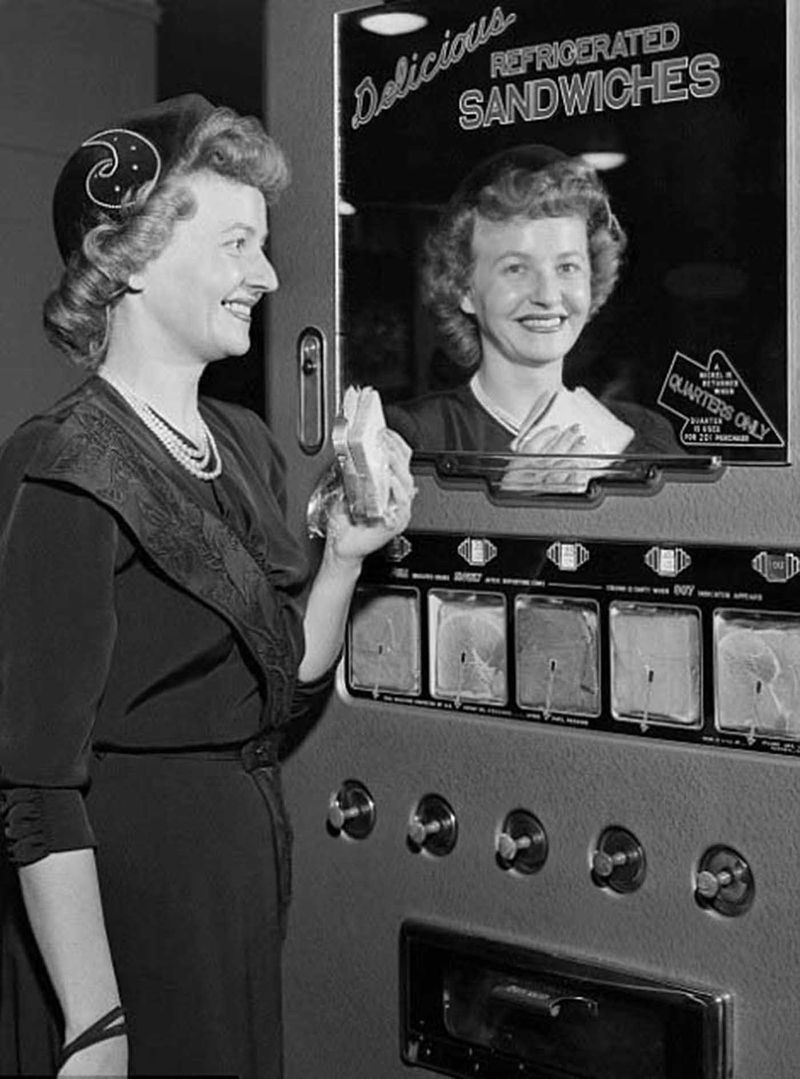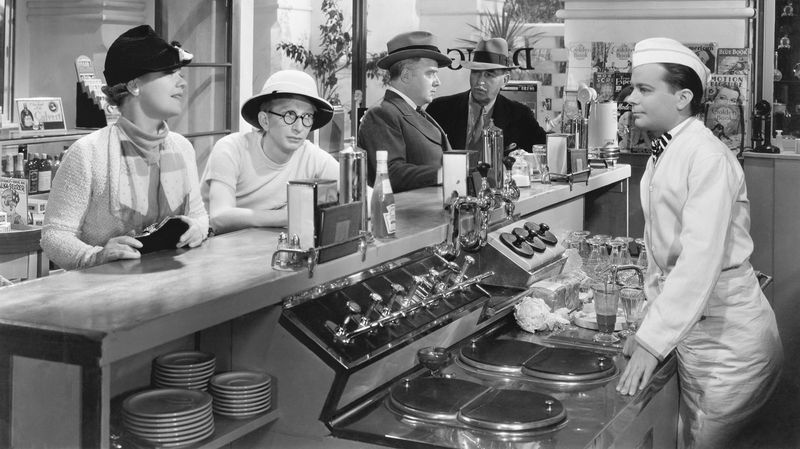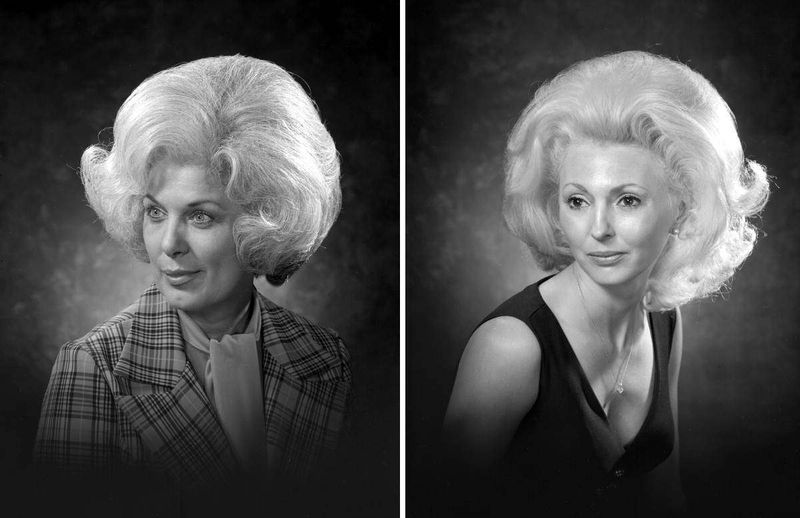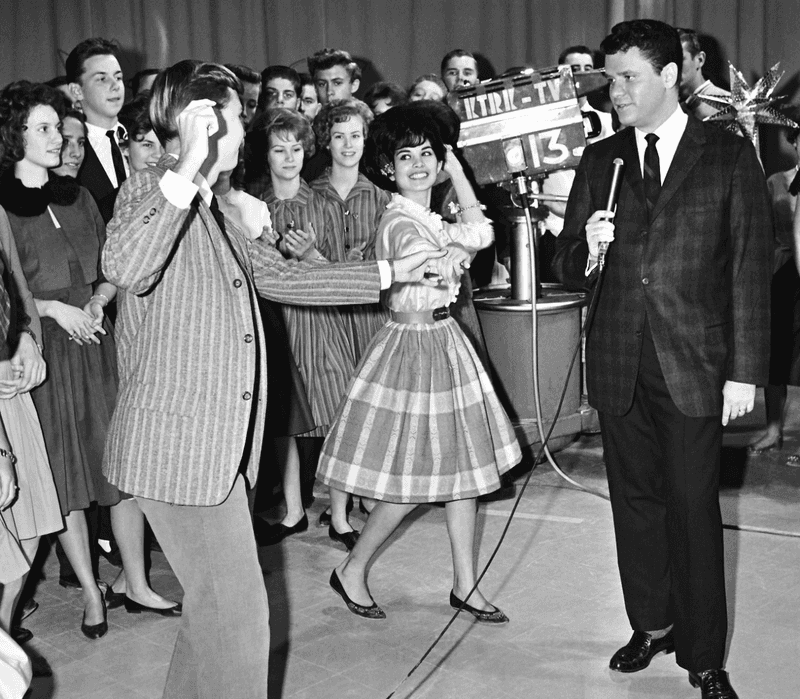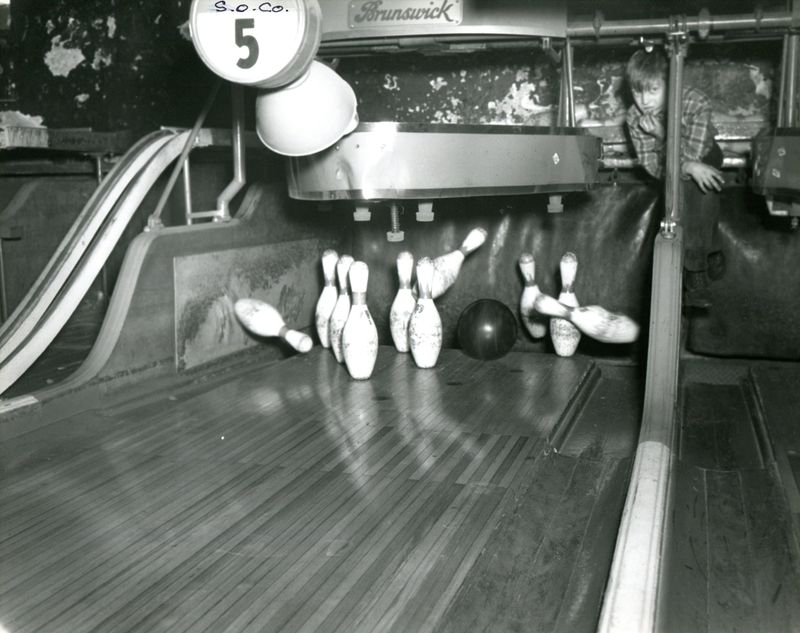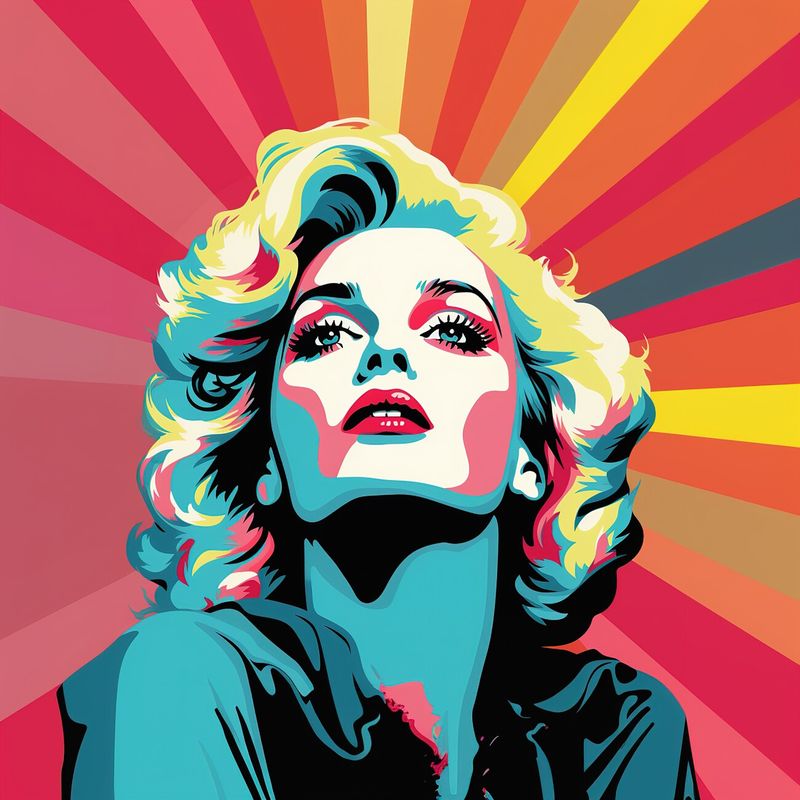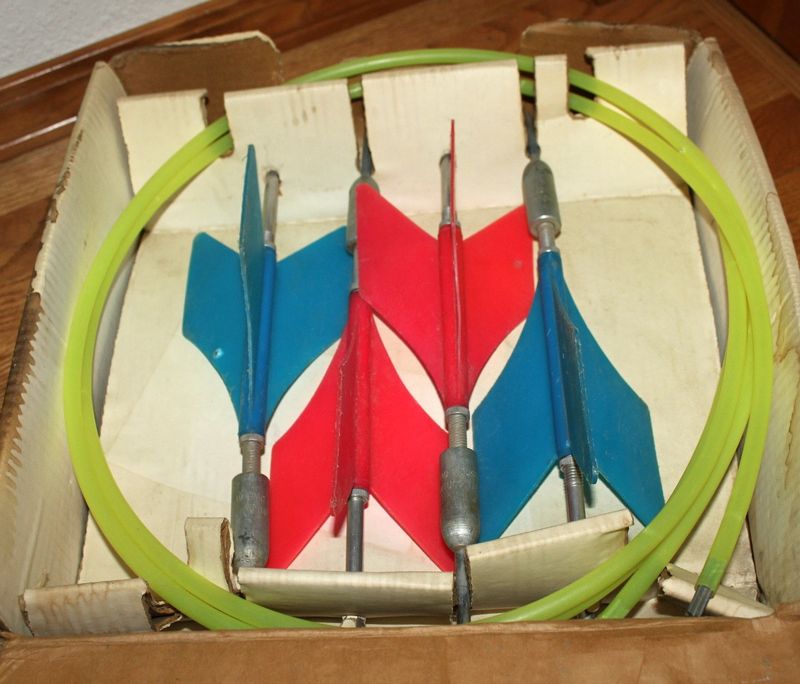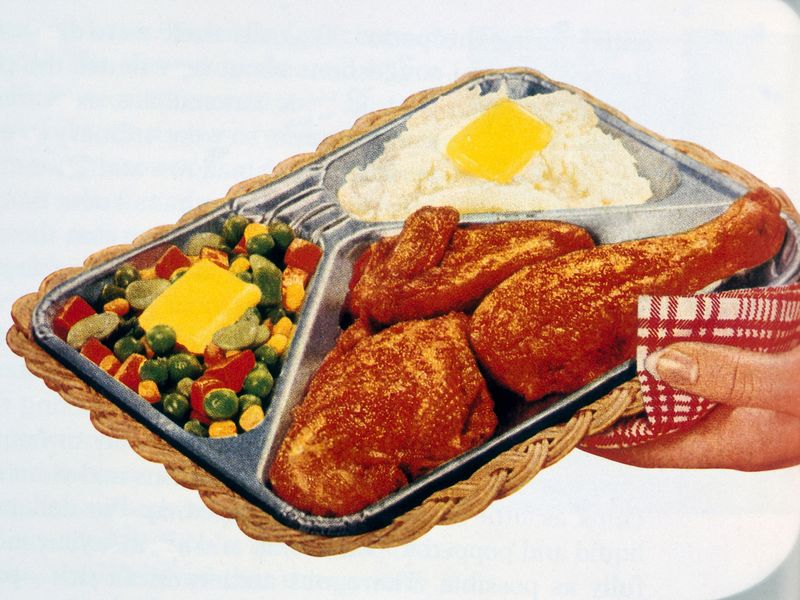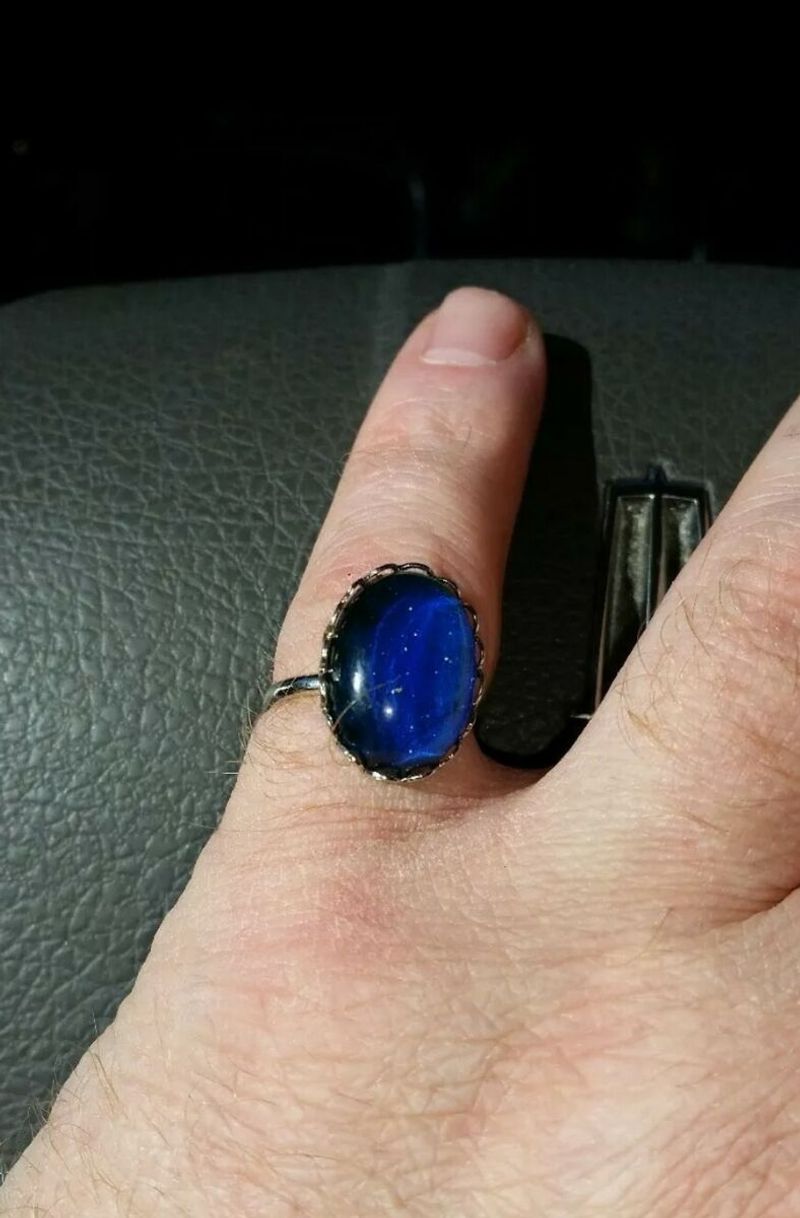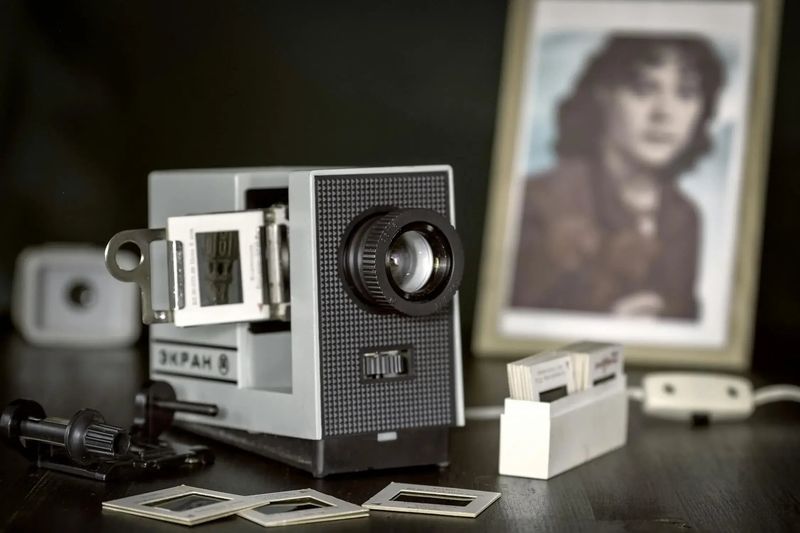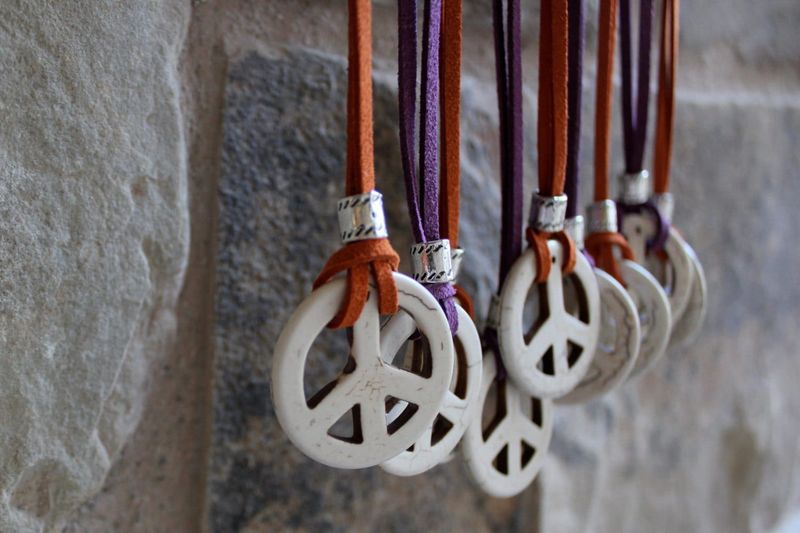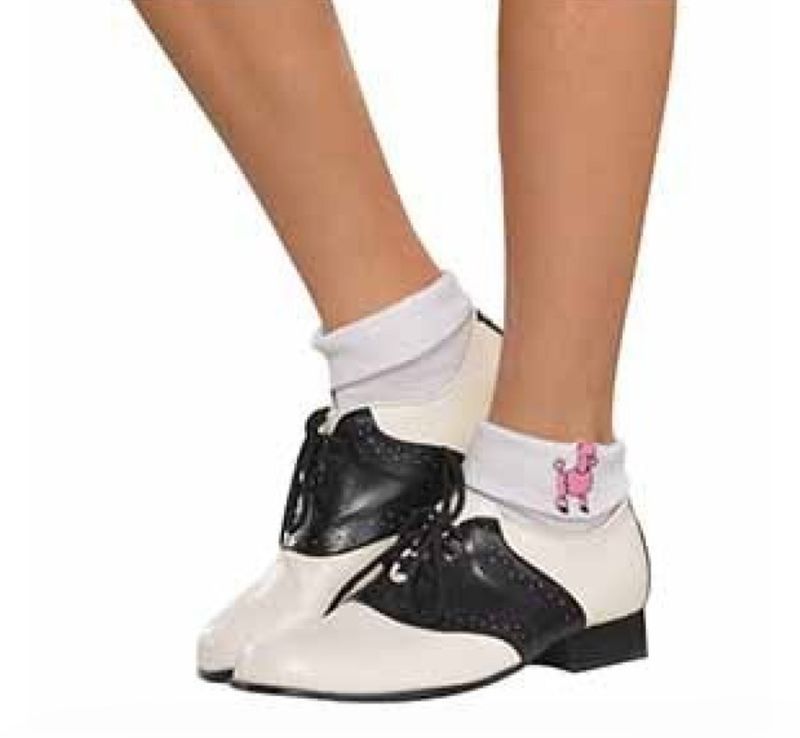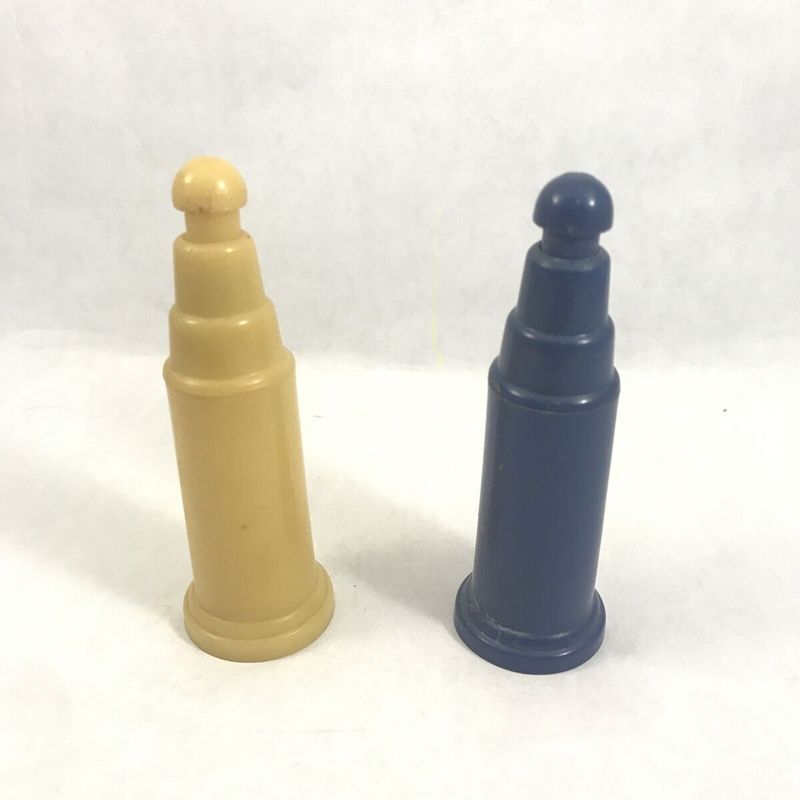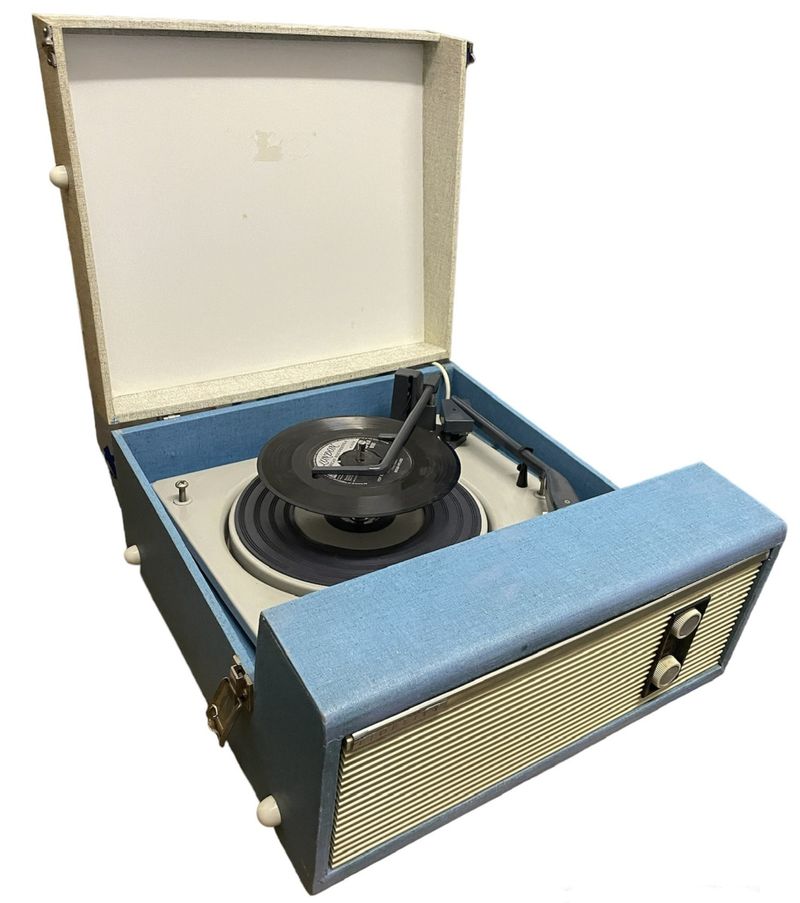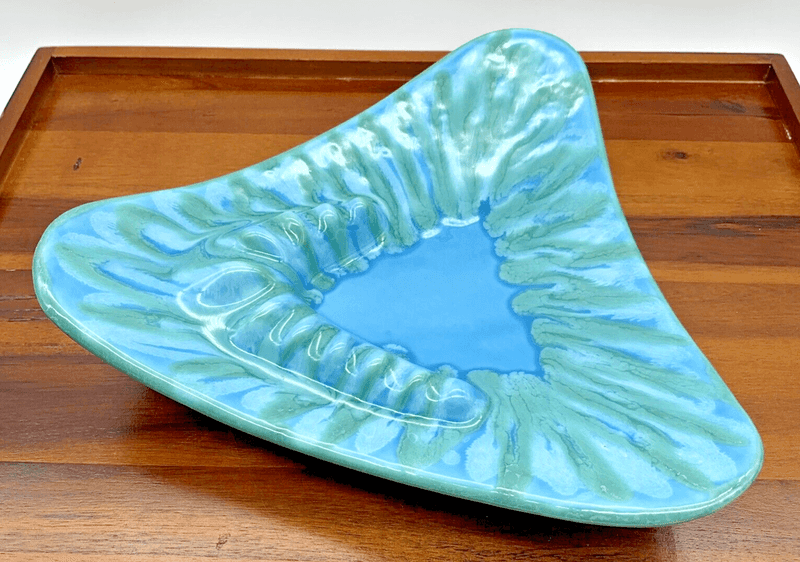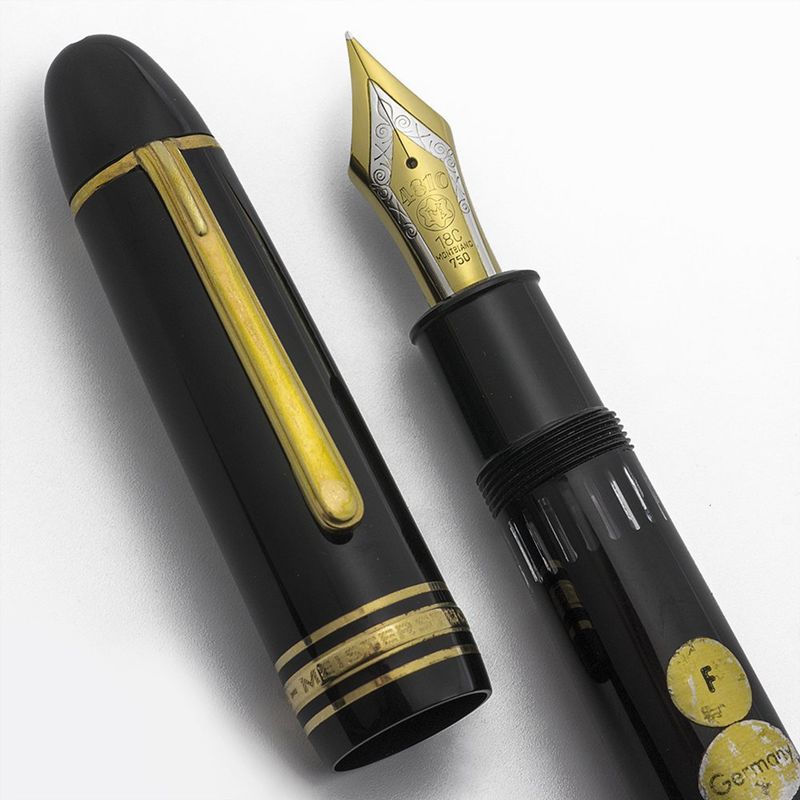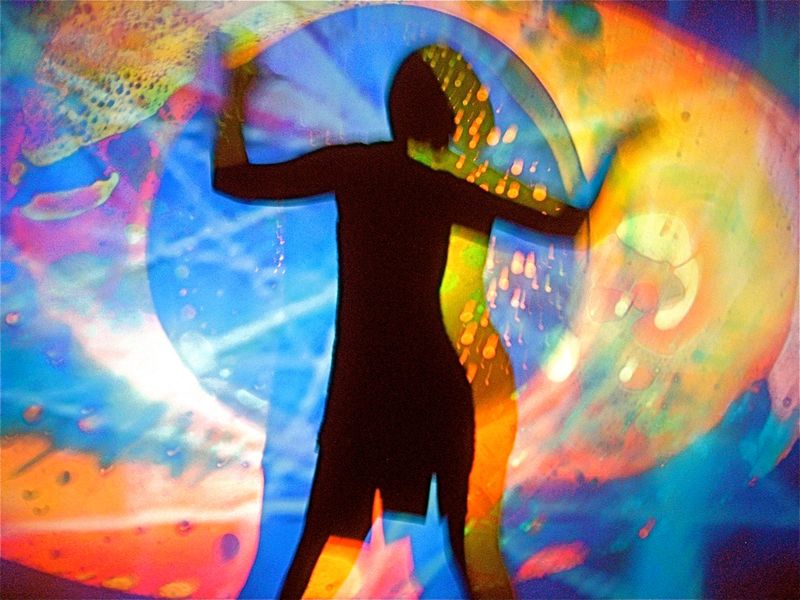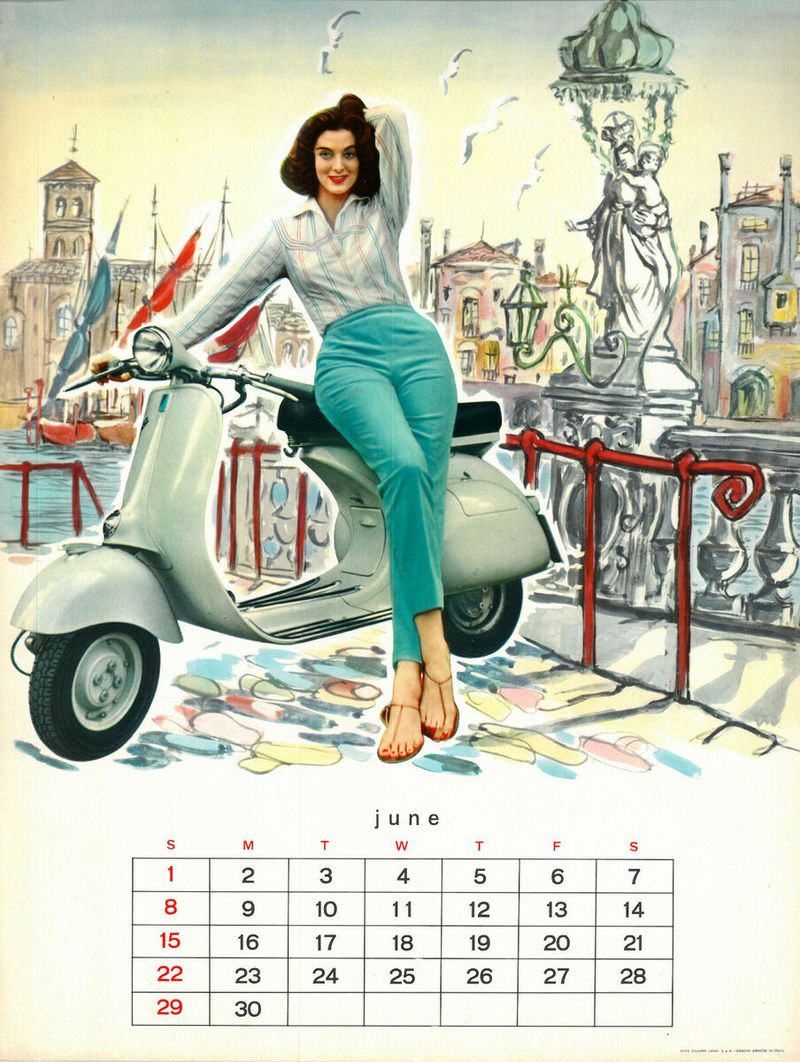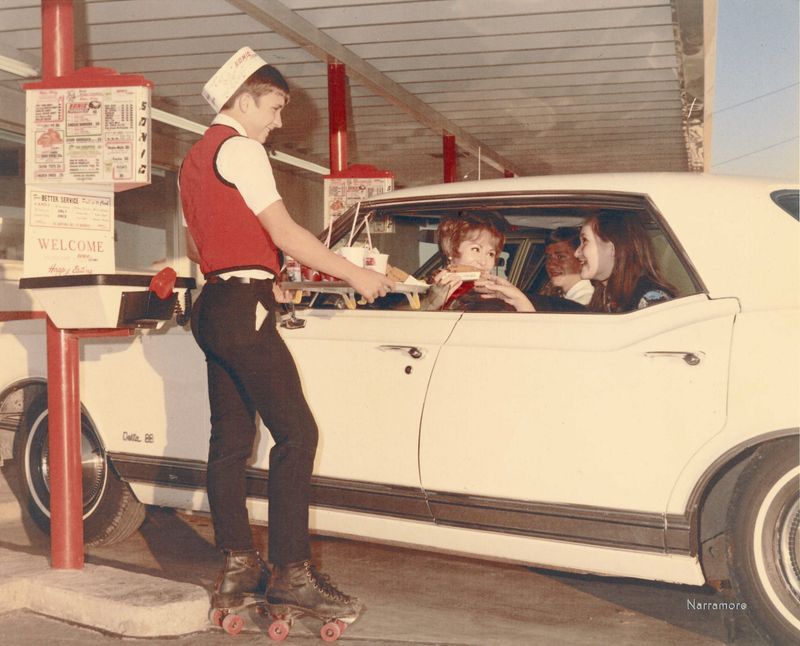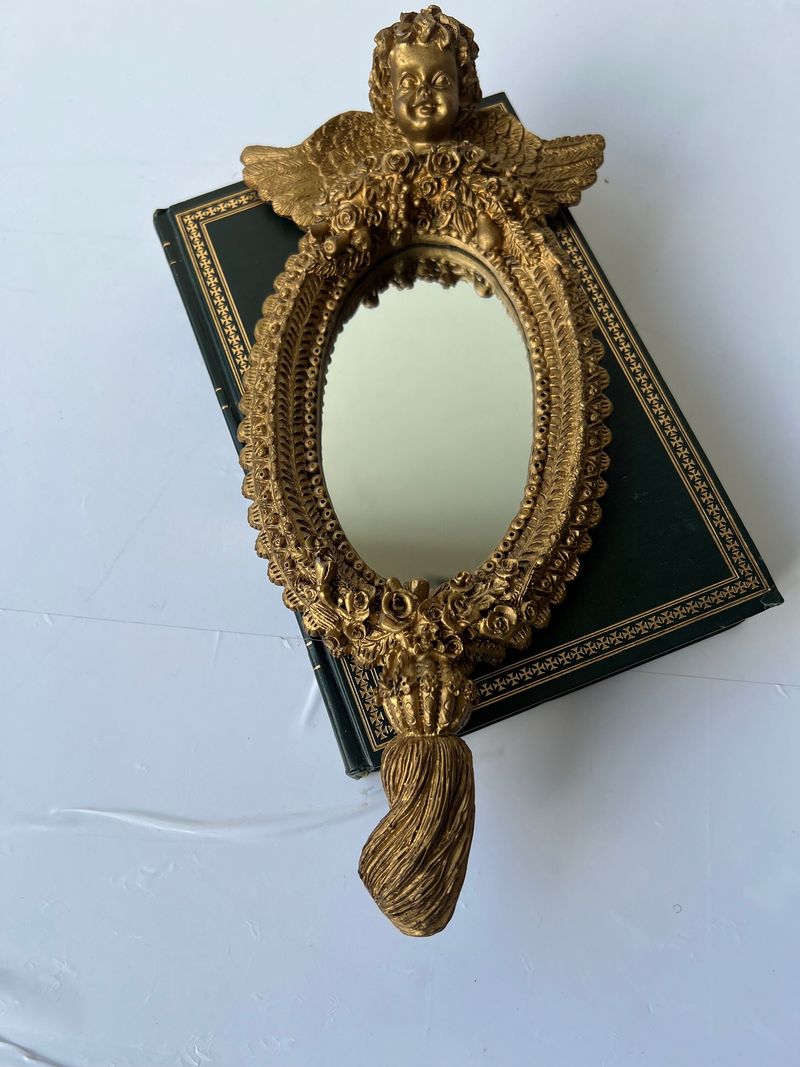The 1950s and 1960s were bustling with innovation and unique cultural trends. Today, many of these have slipped into obscurity.
Let’s explore 30 intriguing items from these decades that are rarely remembered today, ranging from the commonplace to the delightfully eccentric.
1. Milk Delivery Service
In the ’50s and ’60s, milk delivery was a staple of suburban life. Every morning, milkmen would leave fresh glass bottles of milk at doorsteps. This service was not just a convenience but a social ritual.
Families knew their milkman by name and trusted him like a neighbor. Milk delivery faded as supermarkets and refrigeration became common. Yet, those who experienced it often recall the clinking of bottles and the cream’s taste with nostalgia.
Some communities attempt reviving this practice, but it remains a charming relic of a bygone era.
2. Drive-In Theaters
Drive-in theaters epitomized mid-century entertainment. Families and teenagers flocked to these open-air cinemas for movies under the stars. Cars filled the lots, with speakers hooked on windows and snacks from concession stands.
The experience was a mix of film-watching and social mingling. As technology advanced with color TVs and multiplex cinemas, drive-ins declined.
Some still exist as nostalgic venues, but the heyday of drive-ins, with their unique cultural charm, is largely forgotten. Those who attended remember the magic of seeing film amidst the whispers of a summer breeze.
3. TV Antenna Toppers
In the ’50s and ’60s, television antennas were a common sight atop homes, with toppers adding a touch of whimsy.
These toppers came in various shapes, from abstract designs to small replicas of animals or even space-themed objects, reflecting the era’s fascination with exploration.
Families would proudly adorn their antennas with these playful additions, making their rooftops stand out in the neighborhood.
Today, they serve as a reminder of a time when television was a novel family activity, and personalizing your antenna was a subtle form of expression.
4. Metal Lunchboxes with Thermos
Before the era of plastic and insulated bags, metal lunchboxes were the schoolyard status symbols of the ‘50s and ‘60s. Decorated with the beloved icons of the day like astronauts, cowboys, or cartoon characters, these lunchboxes were both functional and fashion statements.
Opening a lunchbox to find a matching thermos inside was a daily delight for children, keeping their drinks warm or cool. These colorful carriers not only held meals but also reflected a child’s personality and interests, making them a cherished part of school life.
5. Tin Toy Robots
In the ’50s and ’60s, tin toy robots were the epitome of futuristic play. Made from colorful tinplate, these wind-up toys delighted children with their mechanical movements.
Each robot was unique, with intricate designs and sometimes flashing lights. They represented the era’s fascination with technology and space exploration. Over time, plastic toys dominated, and tin robots became collector’s items.
Today, they are cherished by vintage toy enthusiasts and symbolize a period of wonder and imagination. Their charm and simplicity continue to captivate those who stumble upon them.
6. Poodle Skirts
Poodle skirts defined teenage fashion in the 1950s. These wide, swingy skirts, featuring poodle appliqués, were often paired with tight sweaters and bobby socks. They represented a youthful, playful style and were popular in dance halls and parties.
Girls would twirl in these skirts, showcasing their vibrant designs. As fashion evolved, poodle skirts became less common, replaced by more streamlined looks.
However, they remain emblematic of ’50s culture and are often worn in retro-themed events. Their whimsical appeal and connection to rock ‘n’ roll nostalgia keeps them fondly remembered.
7. Home Hairdryers
Home hairdryers in the ’50s were a luxury. These bonnet-style dryers required patience, as they were slow but effective. Women would sit under them with curlers, often reading magazines as they waited.
This routine was part of the beauty culture, promoting polished, glamorous looks. Despite their bulkiness and noise, they were beloved for the salon-like experience at home.
Modern hairdryers are compact and powerful, overshadowing these vintage models. Yet, the image of a woman under a bonnet dryer evokes nostalgia for a time when beauty rituals were leisurely and communal.
8. Coin Operated Machines
Coin-operated machines were everywhere in the ’50s and ’60s, offering a range of services from snacks to entertainment. In malls and arcades, they dispensed sodas, candies, and trinkets.
Kiddie rides, powered by coins, were a thrill for children. These machines brought a sense of wonder and self-service novelty. As technology evolved, many became obsolete.
Yet, they are fondly remembered by those who experienced their charm. Today, they are collector’s items and evoke a time when a simple coin could unlock moments of joy and delight.
9. Soda Fountains
Soda fountains were the heart of social life in the mid-20th century. Located in drugstores and diners, these counters served soda, ice cream, and light meals. The soda jerk, an expert in concocting fizzy drinks and floats, was a cultural icon.
Teens and families gathered for treats and conversations. As fast-food chains emerged, soda fountains declined. A few nostalgic spots remain, drawing those longing for a taste of the past.
The soda fountain experience, with its lively atmosphere and sweet offerings, represents a bygone era of community connection.
10. 8-Track Tapes
8-track tapes were a musical revolution, offering portability and diverse listening options. Popular in the ’60s, these cartridges provided continuous music without flipping sides, unlike vinyl records.
They were prevalent in cars, making road trips tuneful. Despite their bulky size, they symbolized musical freedom and innovation. As cassette tapes and CDs emerged, 8-tracks became obsolete.
Collectors and retro enthusiasts cherish them, celebrating their unique place in music history. The distinct click between tracks remains a quirky memory for those who experienced the era of 8-track’s auditory exploration.
11. Bouffant Hairstyles
In the ’60s, bouffant hairstyles were the epitome of glamour. Women spent hours teasing and spraying their hair to achieve the voluminous look. These styles required skill and patience, producing towering hairdos that defied gravity.
Often adorned with accessories, bouffants were seen as a statement of elegance and sophistication. Although today’s trends favor more natural looks, bouffants remain a symbol of the era’s bold fashion choices.
Their exaggerated style and the effort required to maintain them continue to fascinate those interested in vintage beauty trends.
12. The Twist Dance
The Twist was a dance craze that swept the nation in the ’60s. Unlike earlier dances, it required no partner, emphasizing individual expression.
Its simple hip-swiveling motion allowed everyone to participate, and artists like Chubby Checker popularized it through catchy tunes. Dance floors filled with energetic twisters, creating a sense of liberation and joy.
As dance trends evolved, the Twist faded from popularity, but its impact on social dancing was profound. It broke barriers and encouraged personal flair, leaving an indelible mark on dance history.
13. Automated Pinsetters in Bowling Alleys
Bowling became a favorite pastime in the ’50s, evolving with the introduction of automated pinsetters. Prior to their invention, pinboys manually reset the pins, a labor-intensive job that was soon revolutionized by automation.
These machines not only sped up the game but also added a mechanical marvel to the bowling experience. The rhythmic clatter of the pins being reset became synonymous with a night out at the lanes, drawing families and friends to the alley for fun and competition.
14. Pop Art
The pop art movement exploded in the ’60s, blending commercial and high art. Artists like Andy Warhol and Roy Lichtenstein used bold colors and mass-produced imagery, challenging traditional art norms.
This style celebrated consumer culture and everyday objects, making art accessible and relatable. Pop art’s playful and ironic undertones resonated with the era’s rebellious spirit.
Although modern art has evolved, pop art remains influential, inspiring new generations. Its vibrant aesthetics and commentary on society continue to captivate audiences, bridging the gap between art and popular culture.
15. Vinyl Diners
Vinyl diners were quintessential hangouts in the ’50s and ’60s. Characterized by shiny booths, checkered floors, and jukeboxes, they offered more than just food—they were social hubs.
Teenagers gathered for burgers, shakes, and music. Waitstaff in retro uniforms added to the charm. As dining trends shifted, many of these diners disappeared. However, their nostalgic allure persists through themed restaurants and pop culture tributes.
The atmosphere they provided, with the echoes of classic rock ‘n’ roll and the aroma of comfort food, is remembered fondly by those who experienced their heyday.
16. Lawn Jarts
Lawn jarts, a game akin to darts but played outdoors, were a staple of ’60s backyard gatherings. Known for their large, weighted metal tips, players would aim to land them inside a target circle on the ground.
Despite the game’s popularity, safety concerns eventually led to its decline, as the sharp jarts posed hazards, especially for children. The allure of lawn jarts rested in their challenging nature and the lively competition they sparked during family picnics and barbecues.
17. TV Dinners
TV dinners emerged in the ’50s as a modern dining convenience. Packaged in trays, these meals allowed families to enjoy dinner while watching television. They epitomized the era’s fascination with convenience and technology.
Housewives embraced them as a timesaver, offering balanced meals with minimal effort. Over time, culinary tastes evolved, and homemade cooking returned to prominence.
However, TV dinners remain a symbol of mid-century modern life, representing a shift in family dynamics and entertainment. Their nostalgic appeal endures, reminding us of an era when the simple act of dining was innovatively reimagined.
18. Mood Rings
Mood rings, popular in the late ’60s, were more than accessories—they were believed to reflect emotions. These rings contained thermochromic elements that changed color based on skin temperature, supposedly indicating mood shifts.
Although scientifically dubious, they captivated people with their mystical allure. The shifting hues added a playful, personal touch to fashion.
While modern styles have evolved, mood rings remain a nostalgic novelty, representing an era of experimentation and self-discovery. Their enduring charm lies in the whimsical idea that emotions could be as vivid and ever-changing as the colors they displayed.
19. Slide Projectors
Before digital slideshows, slide projectors were the go-to for sharing photographs. Families and friends gathered in living rooms to watch projected memories on walls, reliving vacations, birthdays, and special occasions.
The gentle hum of the projector and the anticipation as each slide came into focus made the experience memorable. Owning a slide projector was akin to holding a storytelling device, where each click advanced the narrative of cherished moments.
20. Peace Sign Necklaces
Peace sign necklaces emerged as a powerful symbol of the ’60s counterculture movement. Worn by activists and free spirits, they represented a commitment to peace and social change.
These necklaces became synonymous with protests and gatherings, embodying hope and unity. While fashion trends have changed, the peace sign remains a timeless emblem of aspiration.
Its message continues to inspire those advocating for harmony and understanding. Wearing a peace sign necklace today evokes the spirit of a decade dedicated to transformative ideals, reminding us that the pursuit of peace is always relevant.
21. Sock Hop Sneakers
Sock hop sneakers were all the rage during the 1950s, offering both comfort and flair. Teens donned these colorful shoes for school dances held in gymnasiums. The exaggerated laces and cushioned soles made them perfect for dancing.
These sneakers often featured bold patterns, enabling wearers to express their individuality. The popularity of sock hops, where music from vinyl records filled the air, ensured these shoes became iconic.
However, as fashion evolved, they were tucked away into the corners of closets. Today, they serve as a symbol of youthful exuberance and a simpler time.
22. Space Age Salt Shakers
Space age salt shakers, inspired by the 1960s space race, brought a futuristic touch to dining tables. These novelty items often resembled tiny rockets or satellites. With sleek designs and metallic finishes, they added flair to any meal.
Families would pass these around during dinner, sparking conversations about space exploration. They became a conversation starter among guests, showcasing the blend of science fiction and daily life.
As space exploration became routine, these quirky items faded from memory, yet they remain a testament to an era fascinated by the cosmos.
23. Portable Record Players
Portable record players were a must-have for music lovers in the 1960s, offering mobility and sound quality. With built-in speakers and handles, they allowed tunes to go anywhere, from picnics to beach outings.
These devices democratized music, enabling people to share their favorite records outdoors. Often crafted in vibrant colors, they were as much a fashion statement as a musical accessory.
As technology advanced, cassette players overshadowed these charming gadgets, leaving them as cherished memories of communal musical experiences.
24. Atomic Age Ashtrays
Atomic age ashtrays, adorned with starburst patterns and sleek lines, epitomized 1950s modernism. These decorative items graced coffee tables, reflecting the era’s fascination with nuclear science.
Beyond their practical use, they were artistic expressions, showcasing the optimism and innovation of the time. The unique designs made them desirable collectibles, often sparking conversations about modern living.
As smoking declined, these ashtrays were relegated to attics, yet they remain as artifacts of a time when the future felt limitless.
25. Tiki Party Attire
Tiki party attire flourished in the 1960s, embodying the spirit of escapism and exotic adventure. Hawaiian shirts, grass skirts, and leis were staples at themed gatherings, celebrating Polynesian culture.
These parties offered a temporary retreat from everyday life, with music, dance, and tropical drinks enhancing the experience. The vibrant clothing choices added to the festive atmosphere, making every attendee feel like they were on vacation.
Though the trend has waned, tiki attire remains a nostalgic reminder of carefree celebrations and cultural curiosity.
26. Fountain Pens with Inkwells
Back in the ’50s and ’60s, the art of writing was a cherished skill, often practiced with elegant fountain pens. These pens required users to manually refill them using inkwells, a process that was both meticulous and rewarding.
The ritual of refilling a pen was almost meditative, connecting the writer with their words in a tangible way. Fountain pens were not just writing tools; they were symbols of status and sophistication.
Owning a high-quality pen was akin to having a piece of wearable art, often passed down through generations. Today, the convenience of ballpoint pens has overshadowed these beauties, but their charm remains unmatched.
Collectors still hunt for vintage fountain pens, appreciating the craftsmanship and elegance they bring to the writing experience. So, if you stumble upon one, consider preserving this slice of history.
27. Psychedelic Light Shows
Psychedelic light shows became synonymous with the counterculture movement of the 1960s, transforming concerts into visual spectacles. Using overhead projectors, colored oils, and slides, artists created mesmerizing displays.
These light shows accompanied live music, enhancing the sensory experience and encouraging a deeper connection with the performance. Concertgoers were captivated by the vibrant colors and abstract patterns.
As technology evolved, such shows became rare, yet they are remembered for pushing artistic boundaries and their role in the psychedelic scene.
28. Pin-Up Calendars
Before digital calendars became the norm, pin-up calendars adorned many walls, bringing a touch of glamour and whimsy to everyday life. These calendars featured illustrations or photos of models in stylish poses, often associated with a blend of allure and innocence.
Popular among all sorts of establishments, from garages to kitchens, they served as both practical tools and eye-catching décor. The models depicted would often become icons in their own right, celebrated for their style and charisma.
Though considered kitsch by today’s standards, pin-up calendars represent an era of optimism and artistic expression. Their nostalgic appeal continues to charm collectors and retro enthusiasts alike.
29. Carhop Roller Skates
Carhop roller skates were essential for waitresses at 1960s drive-in restaurants, combining service efficiency with entertainment. Skilled servers glided between cars, delivering meals with flair.
These skates added a lively element to dining, attracting patrons eager for a unique experience. Neon wheels and stylish uniforms completed the ensemble, creating a memorable atmosphere.
Though largely replaced by modern fast-food practices, carhop skates remain a nostalgic symbol of a time when dining out was an event in itself.
30. Glamorous Hand Mirrors
Glamorous hand mirrors of the 1950s were more than mere tools; they were statements of style and elegance. Often adorned with intricate designs, these mirrors reflected the beauty standards of the time.
Sitting on vanity tables, they were essential for daily grooming rituals, providing a touch of class to the routine. The weight and craftsmanship of each piece added to its allure.
As minimalism took hold, these mirrors were set aside, yet they remain cherished keepsakes, echoing an era of refined personal care.
